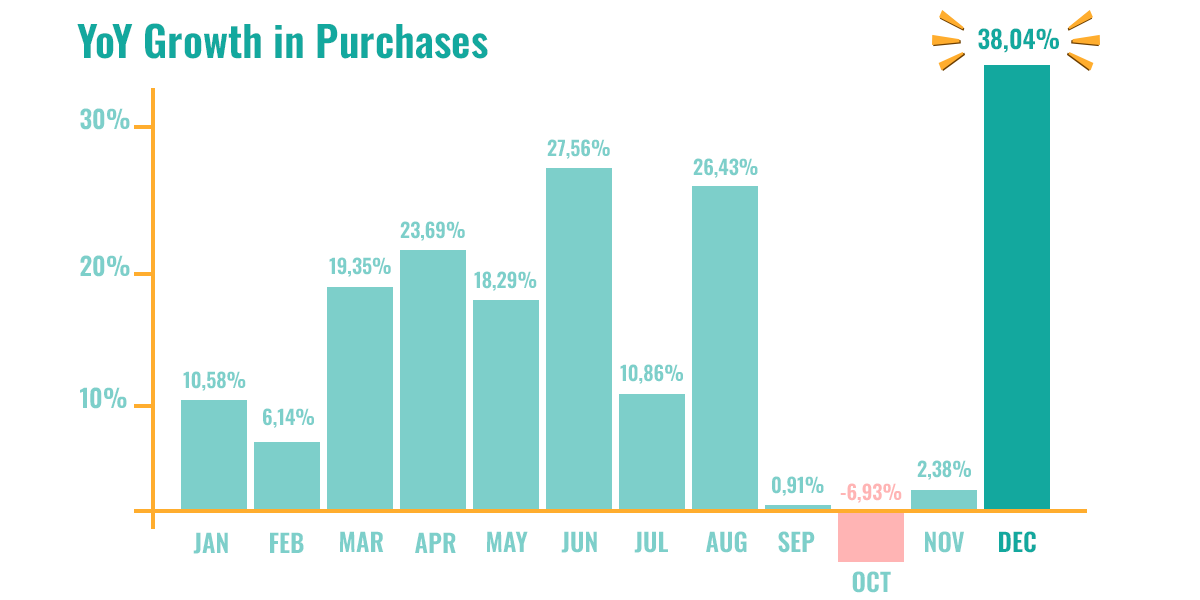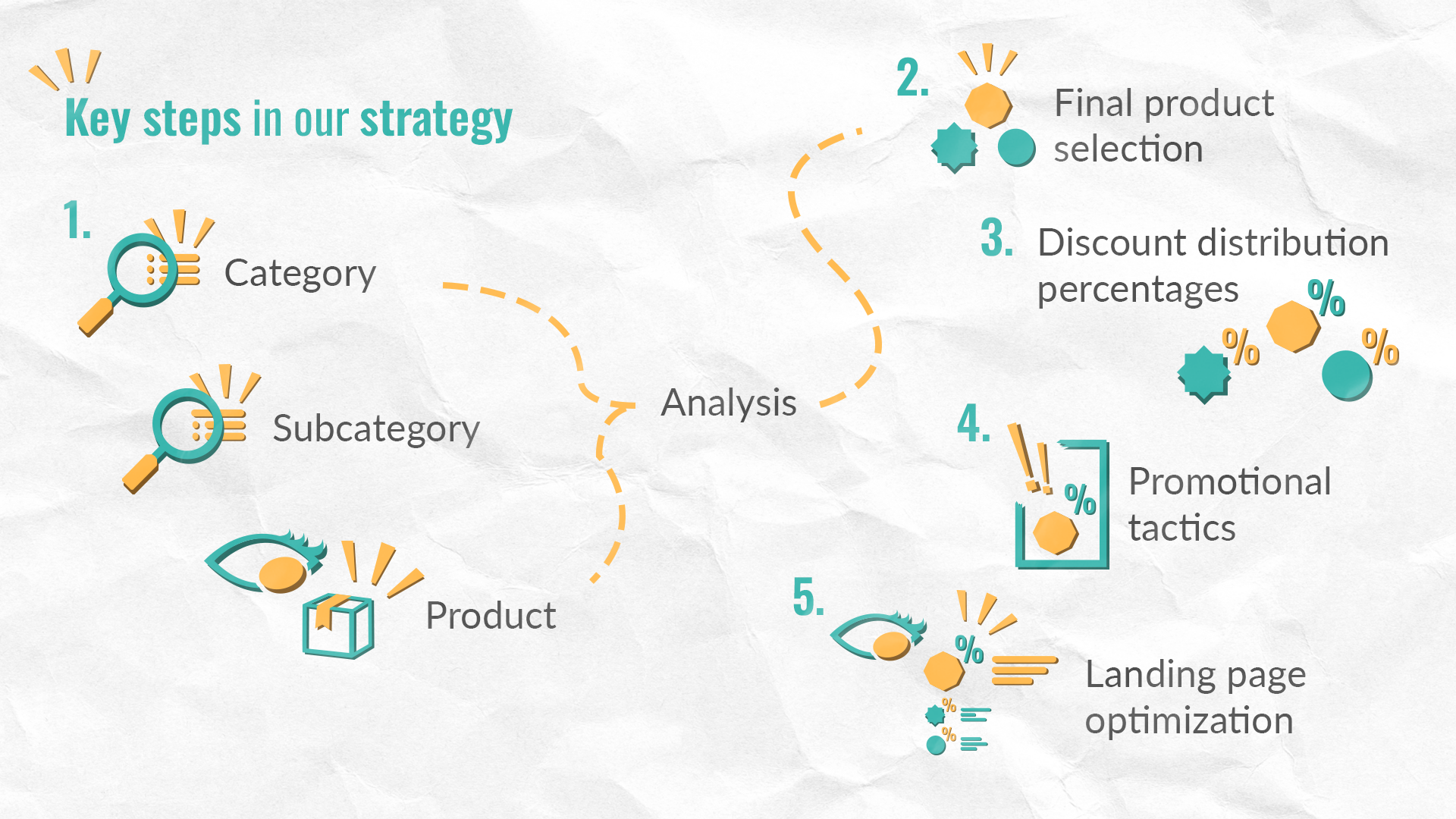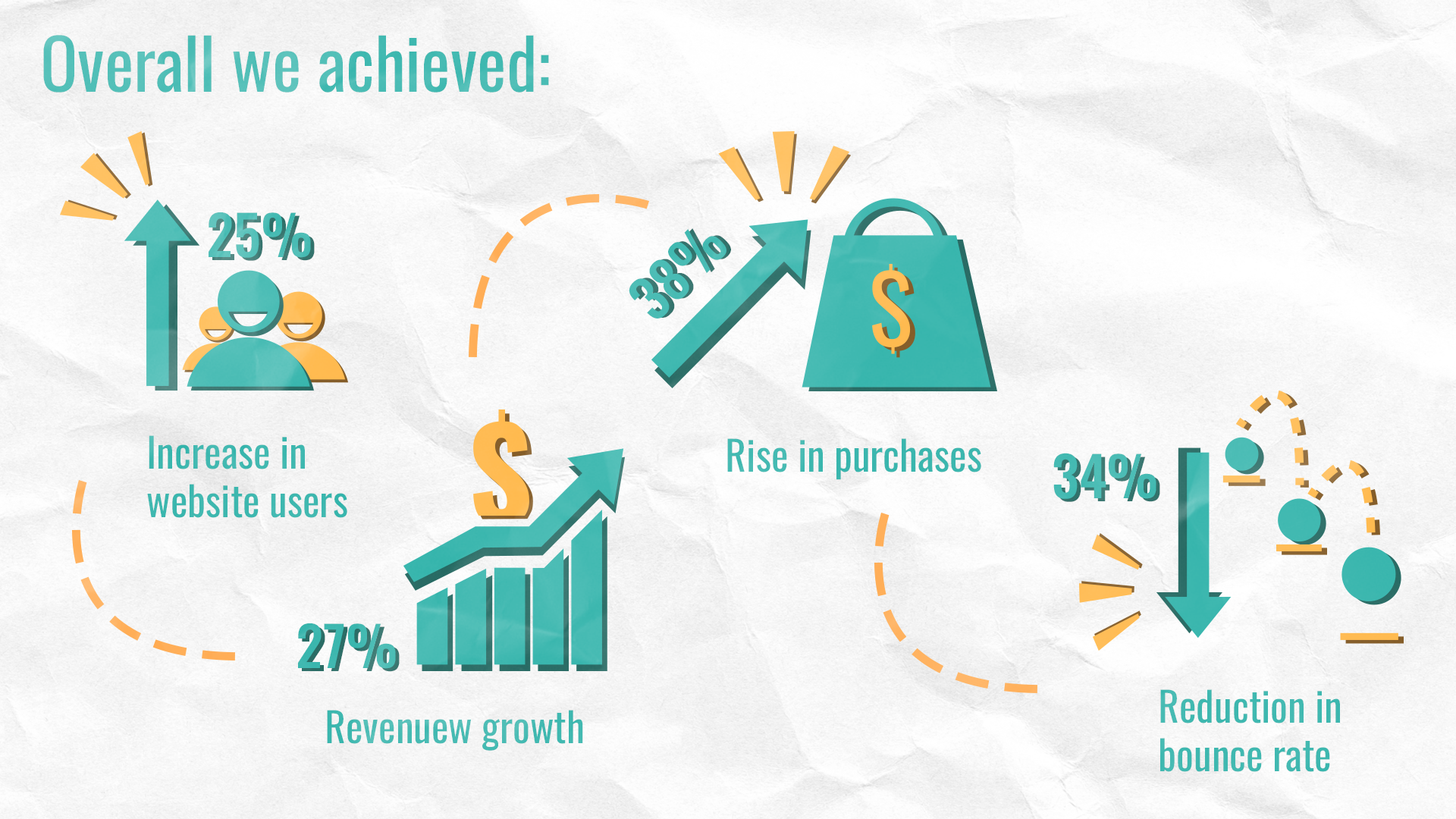
In December 2023, we orchestrated a sales campaign for an adult e-commerce website, leading to a significant 38% year-over-year rise in monthly purchases. The campaign was underscored by a thorough data-driven approach, which analyzed product performance across multiple metrics to curate an optimized sale inventory.
Objectives
The client faced a significant challenge after not meeting their targeted revenue growth and cost/revenue ratio in the final quarter.
With restrictions on advertising in traditional social channels, the importance of a high-conversion offer became paramount to leverage paid channels – especially Google Search.
Strategic Approach
ROImonks stepped in to transform the sales planning process. We abandoned the client’s traditional approach in favor of a data-backed strategy, where our team performed an extensive analysis of two years’ worth of sales data.
The goal was straightforward yet challenging: execute a sale that not only met but exceeded the year’s targets. We aimed to achieve this by identifying the best-selling products and categories.
We also ensured the promotion resonated with proven customer preferences and facilitated the clearance of slow-moving inventory.
Execution
Product Selection
This analysis was a calculated exercise in precision. In shaping our sales campaign, we adopted a detailed, analytics-driven strategy to select products:
1. Category Analysis
Starting with an overarching view, we listed all product categories and subcategories, analyzing them against two critical metrics:
- total sales
- revenue
Our goal was to support the representation of the most successful categories within the sale, thereby leveraging their market success to enhance overall revenue and growth.
To ensure the campaign appealed to a broad audience, we decided that 15% of the products available on the website would be featured in the sale, offering a diverse selection to our customers.
We then determined the proportion of discounted products for each category based on their revenue contributions.
In addition, we made sure that top performers, which accounted for a significant portion of the year’s revenue, received a proportional share of the sale items.
2. Subcategory Analysis
Our next step was to drill down into subcategories, assigning specific percentages of the discounted products to reflect their sales success.
This allowed us to focus our selection on subcategories that had already proven popular with customers, ensuring their substantial presence in the sale.
For instance, after identifying the top products in each, we allocated a larger portion of the sale to them.
3. Product Analysis
After determining the proportion of discounted items for each category and subcategory, our focus shifted to the granular level of individual product selection.
Here, our methodology became particularly detailed and inventive. We evaluated each product across several critical parameters:
- Its contribution to total revenue.
- Sales volume as a percentage of the total items sold.
- Stock levels in comparison to the overall inventory.
- Performance within its category.
- Product return rate.
This comprehensive analysis aimed to uncover not just the best-selling items but to identify products that offered the highest value based on a combination of:
- sales performance
- stock availability
- customer satisfaction.
To synthesize these diverse data points into actionable insights, we developed intricate formulas that assigned a weighted score to each product.
This score—or product weight—was calculated to reflect the product’s overall value to the campaign, taking into account its sales contribution, stock situation, category significance, and return risk.
The resulting weight guided our final selection, ensuring that the products chosen for the sale were those most likely to enhance the campaign’s success by balancing demand, value, and customer satisfaction.
This sophisticated selection process enabled us to curate an optimal mix of products for the sale, designed to maximize revenue, manage inventory efficiently, and minimize returns.
Through this data-driven, weighted approach, we ensured that our sale offerings were not only attractive to customers but also strategically aligned with our business objectives and inventory considerations.
Tactical Distribution of Discounts
We strategically distributed discounts across the selected products:
- 25% of the products were discounted by 30%
- Another 25% by 35%
- 20% received a 40% discount
- 20% were marked down by 20%
- The remaining 10% were offered at a 10% discount.
This approach maintained customer interest through a varied discount offering.
Promotional Tactics
The campaign’s visual language was festively themed with a playful tone that captured the holiday spirit and stimulated gift purchases.
The promotion’s centerpiece was the “Best of 2023 Sale,” offering discounts of up to 69% – a playful nod to the brand’s market.
In addition, a sticky bar, featuring an additional 20% off promo code, was strategically deployed during historically slower periods to boost conversion rates, especially during weekends and the days surrounding Christmas.
Landing Page Optimization
The first-page product assortment was carefully curated to showcase variety and top-sellers, ensuring immediate engagement upon arrival.
Notable Results
The results were quite impressive:
- A 25% increase in website users.
- A substantial 38% rise in purchases.
- A 27% revenue growth.
- A 34% reduction in bounce rate, signaling improved engagement with the sale.
These metrics evidenced the campaign’s triumph in drawing customers and converting them at an unprecedented rate for the client.
Learnings and Strategic Adjustments
Our biggest takeaway: a data-informed approach to sales planning is not only effective but also proved to be replicable across various clients and industries.
During the campaign, we fine-tuned Google Ads for seasonality, ensuring that our bids were competitive and aggressive, capturing the maximum amount of traffic.
The promo code’s on-off strategy during slow periods further propelled our success, with a timer included to instill a sense of urgency.
Conclusion
In the ever-competitive e-commerce landscape, this client’s December Sale exemplified the potency of data-driven decision-making.
It reaffirms the pivotal role of tailored promotional strategies, especially when dealing with limited advertising channels.
If this case study made you curious about how we can help your business grow, check out our Measurement & Analytics service.


